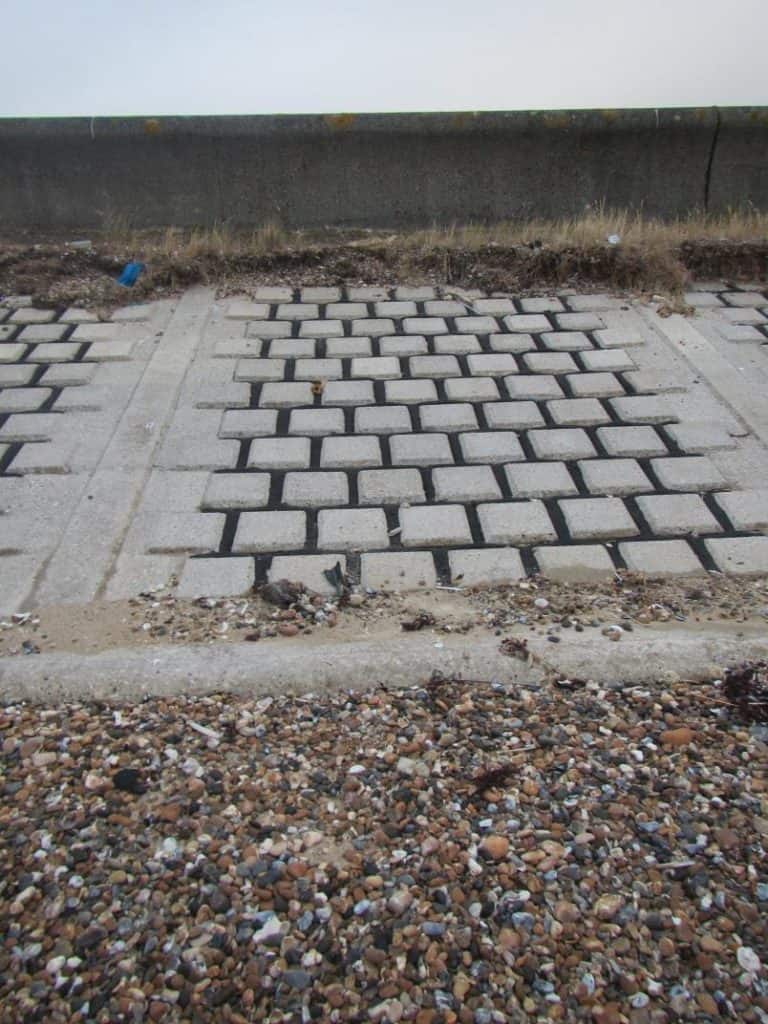The majority of the UK’s coastline is managed in order to prevent or minimise coastal erosion. These management strategies often require the use of coastal defences to fix the land-sea boundary or reduce the impact of erosion. Coastal defences used in the UK broadly fall into two categories, hard and soft engineering defences.
Soft engineering
Soft engineering is a more sustainable, long-term and potentially cheaper approach to coastal defence, working with natural processes to protect the shoreline.
Beach
A beach acts as a coastal defence as it reduces wave impact and prevents inland flooding. However the beach needs to be properly managed to ensure it is wide and high enough to prevent it from being overtopped during high sea levels. This can be done through beach replenishment or beach recycling. In beach replenishment, material is sourced from outside of the normal sediment system and introduced to the beach whereas in beach recycling material is sourced from downdrift within the system and returned to nourish the beach.
With beach replenishment, the process is very dependent on weather conditions. However, in beach recycling the method is planned based on calculations of beach levels, whereby data is collected by regular beach surveys. Shingle drifts from place to place dependent on the bay; some regularly lose material whereas others commonly gain it. To restore the balance, shingle is moved from these areas of accretion to those eroded by wave action. Material is moved using dump trucks and the beach is then regraded by a bulldozer. This is particularly effective during the winter months when it is not possible for a barge to replenish the beach via material brought in from the sea.
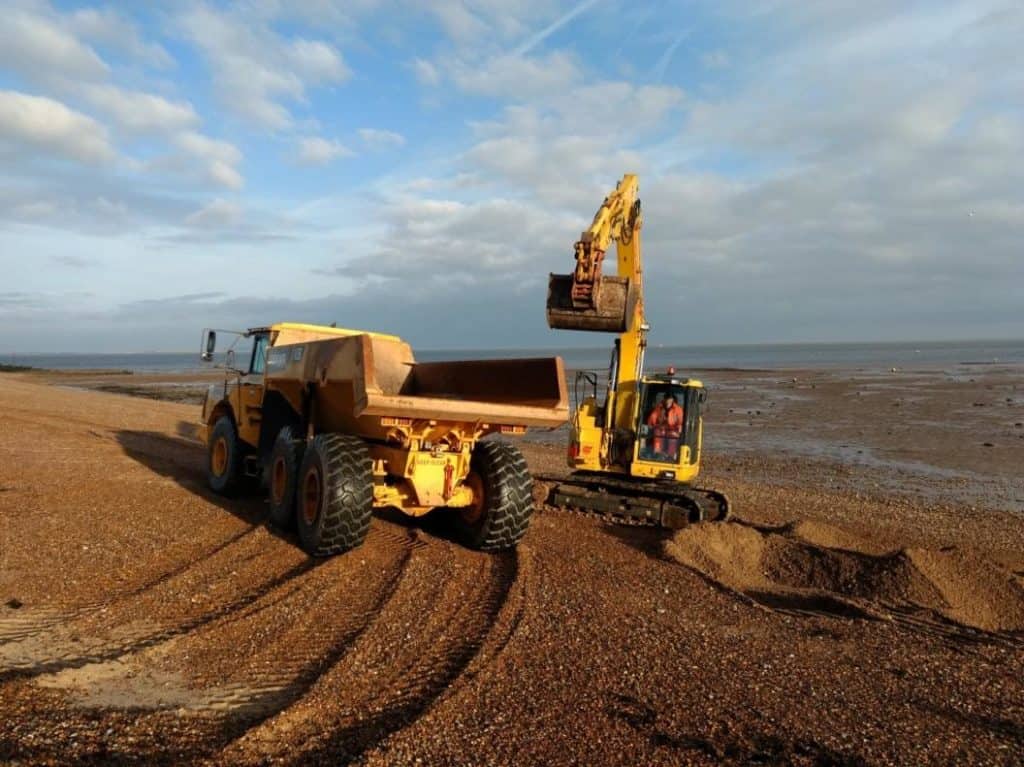
Hard engineering
Hard engineering can be more costly, have a shorter life time and be more intrusive than soft engineering, providing a temporary fix. Hard engineering defences often cause more problems elsewhere.
Groynes
A barrier extending from the beach, offshore into the sea. Groynes can be made from either timber or rock. Rock groynes however tend to be more expensive although they are generally more durable and last much longer than timber.
Groynes are used to slow the loss of beach grade sediment through long shore drift. With proper groyne field design, beach erosion can be reduced due to trapped sediment on the up-drift side of the groyne. Groynes can be constructed out of wood, stone or concrete depending on the size of native beach material. Although acting to reduce the erosion on site, groynes typically cause sediment starvation down-drift, shifting the erosion further down the coastline. An example of a timber groyne is shown below on the Whitstable frontage.
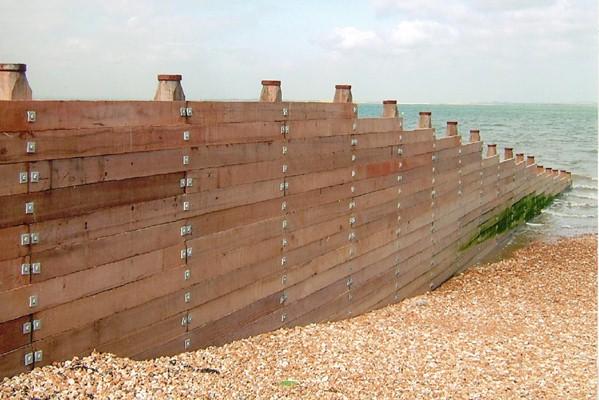
SeaBee
A coastal defence structure to protect against strong tides/waves. A Seabee, also known as a honeycomb sea wall, is constructed as a sloped sea wall made from concrete blocks with hexagonal holes. These are placed as a revetment over gravel or rock. A good example of a SeaBee can be seen at Shoreham.
Rock revetments
Onshore sloped structures used to reduce the landward migration of the beach due to coastal erosion. Wave energy is limited by the structure to reduce the erosive power of the wave action. They can be constructed out of concrete, stone or asphalt. The structure should be designed to have a crest sufficiently high to stop wave overtopping during a storm event. The diagram below shows a recently constructed rock revetment at Warden Bay.
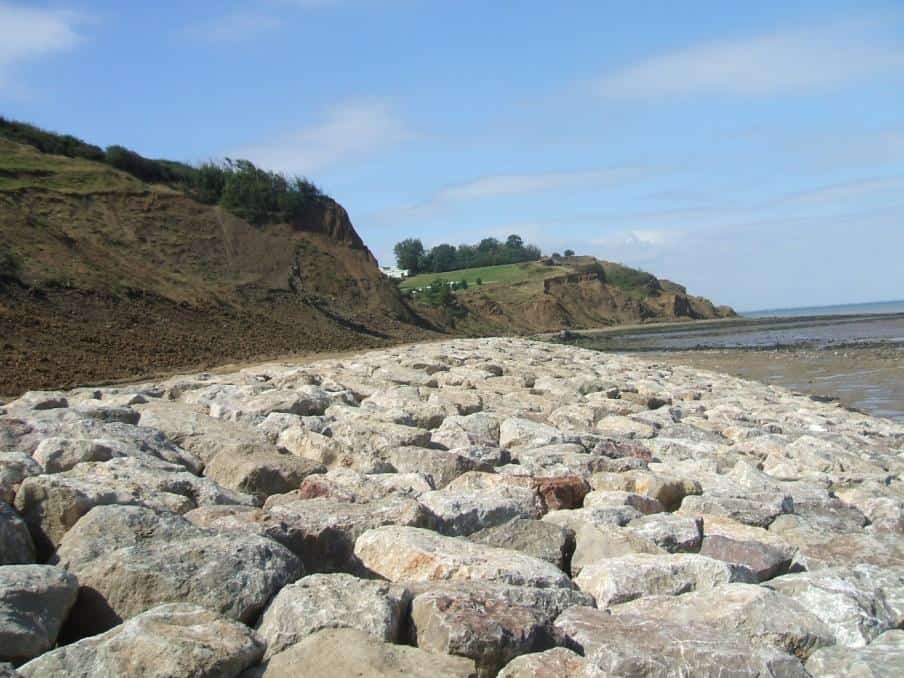
Rock breakwater
Offshore sloped or vertical structures reducing incoming wave energy arriving at the coastline. As well as reducing erosion, this also creates calmer waters for harbours and shipping. They can be constructed out of concrete or stone and rock. An example is shown in the diagram below at Herne Bay.
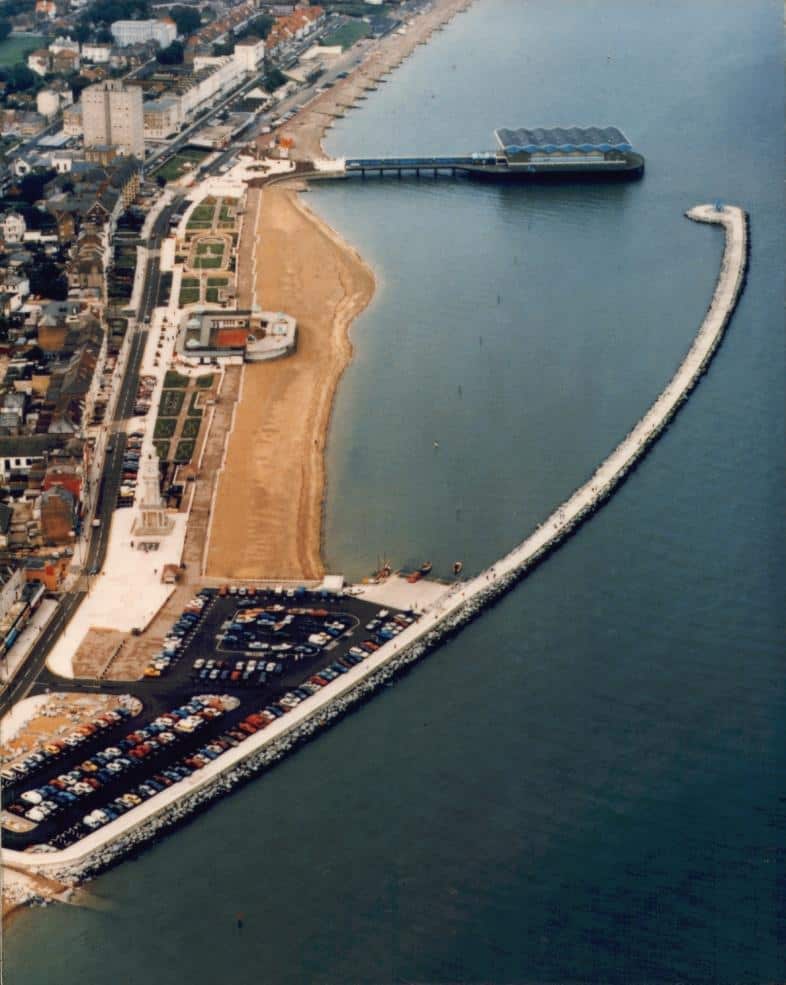
Sea wall
Vertical or near-vertical structures designed to limit erosion due to wave attack. Typical construction materials include concrete, steel and timber. The concrete Northern Sea Wall at Reculver is shown below. Concrete curved superstructures can be incorporated to reduce wave overtopping.
